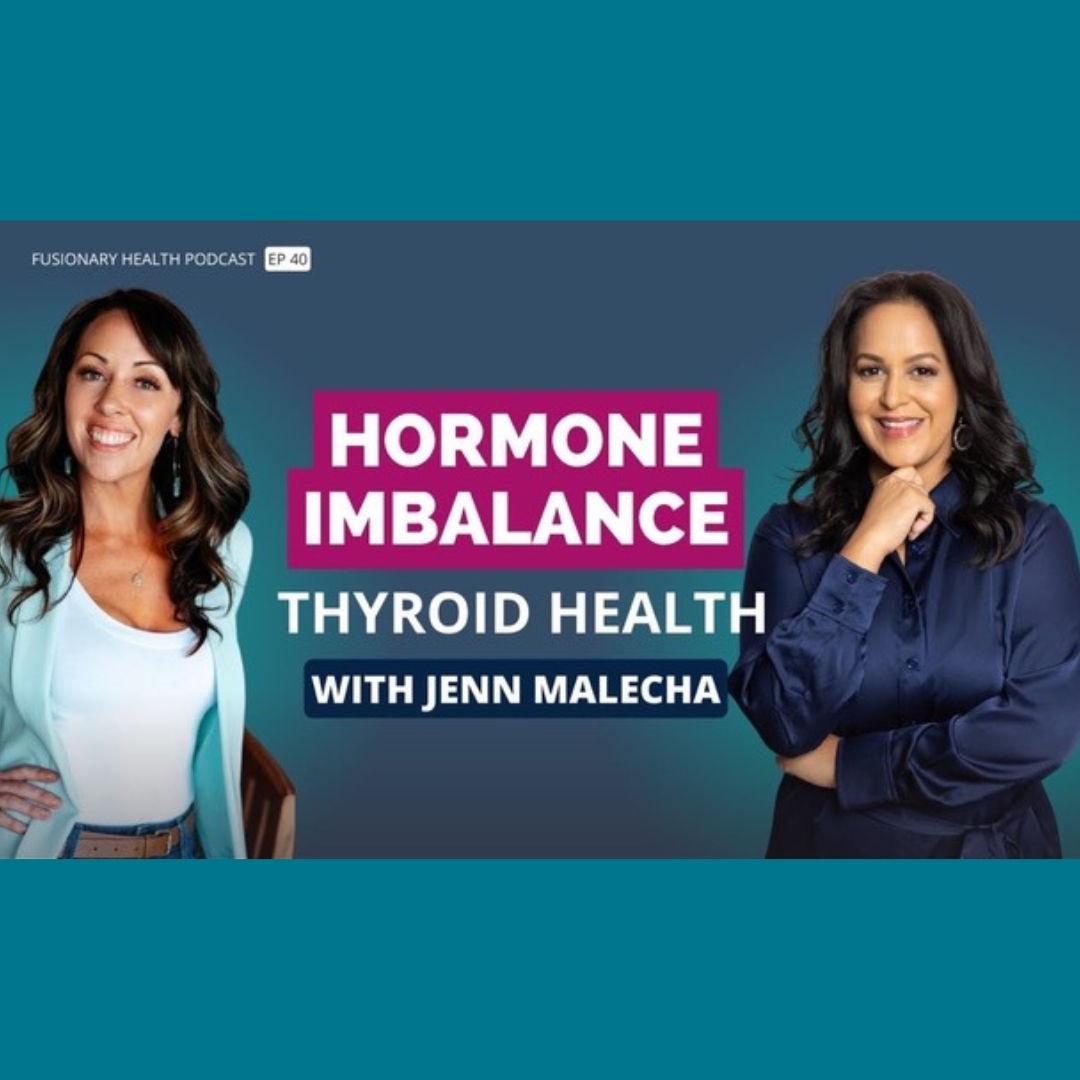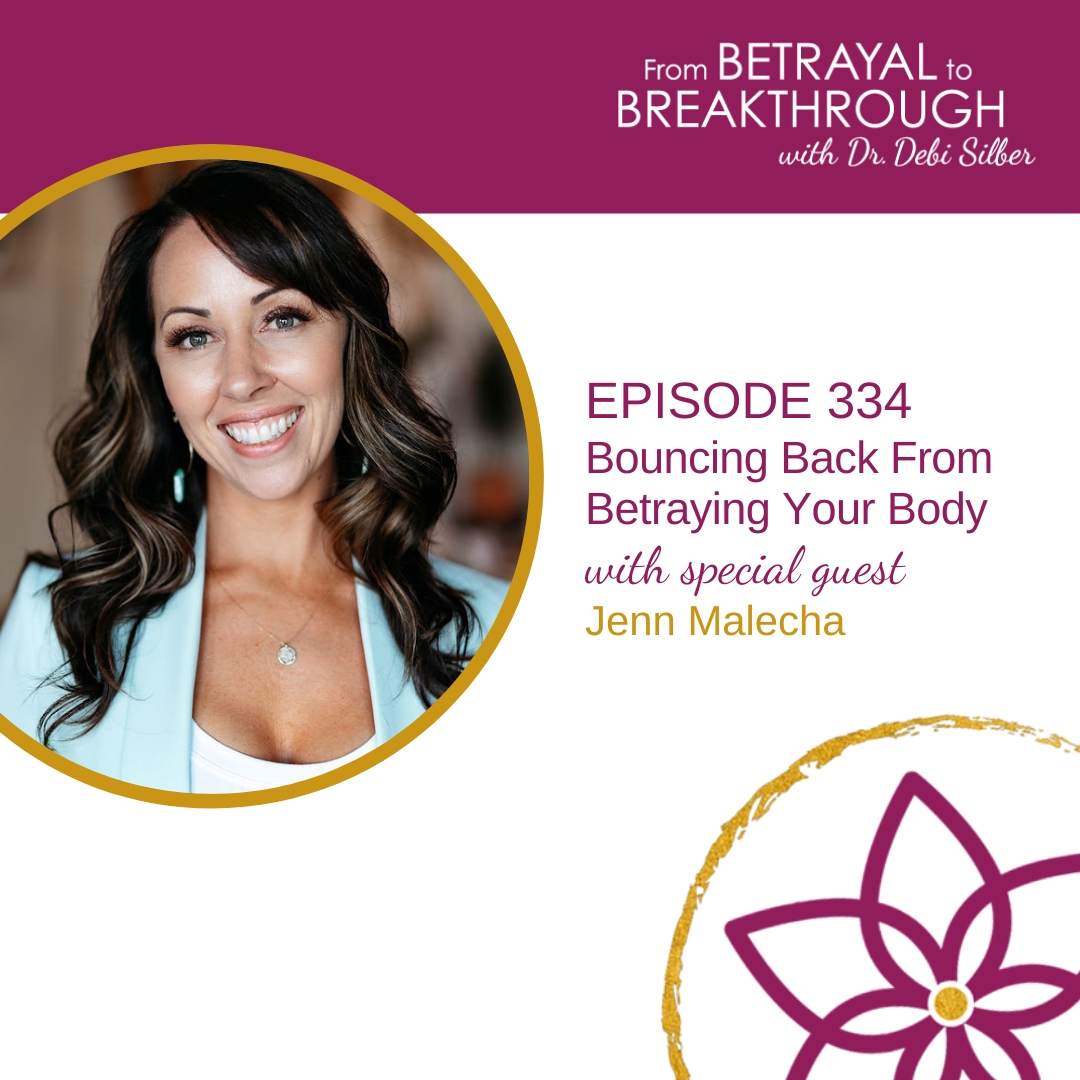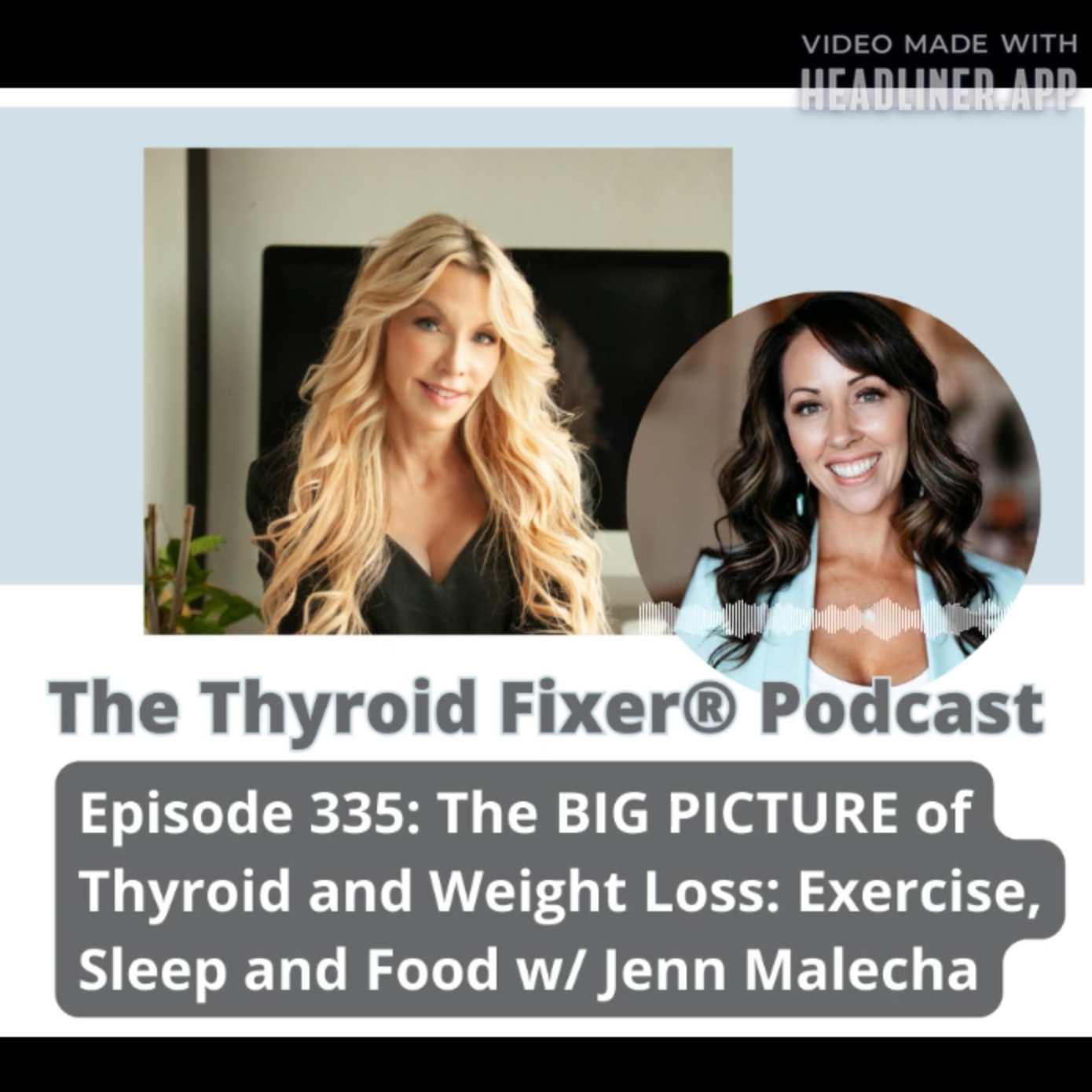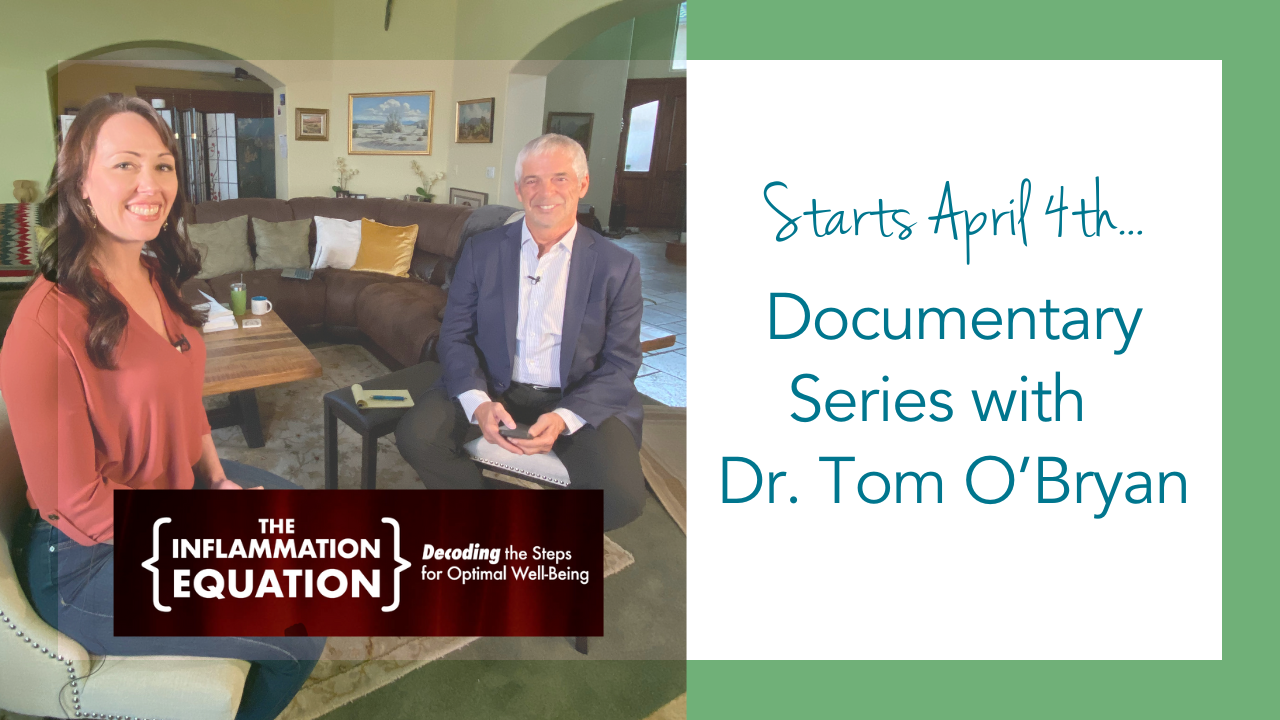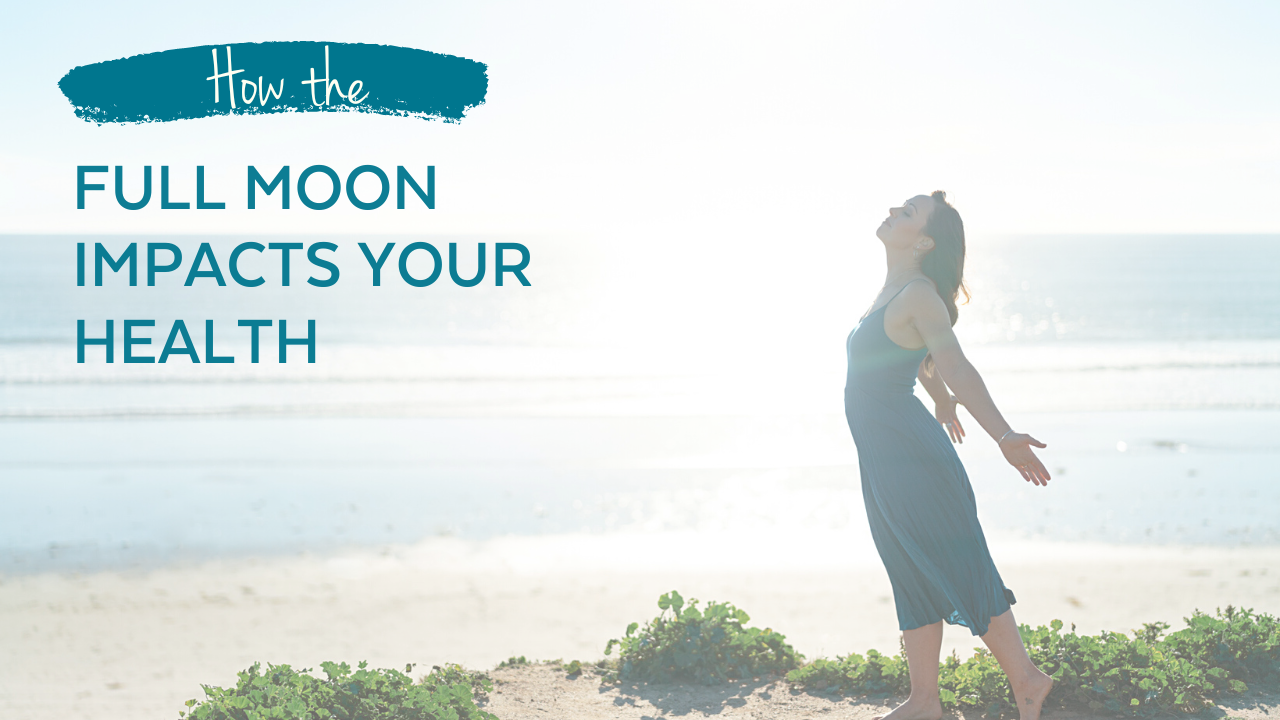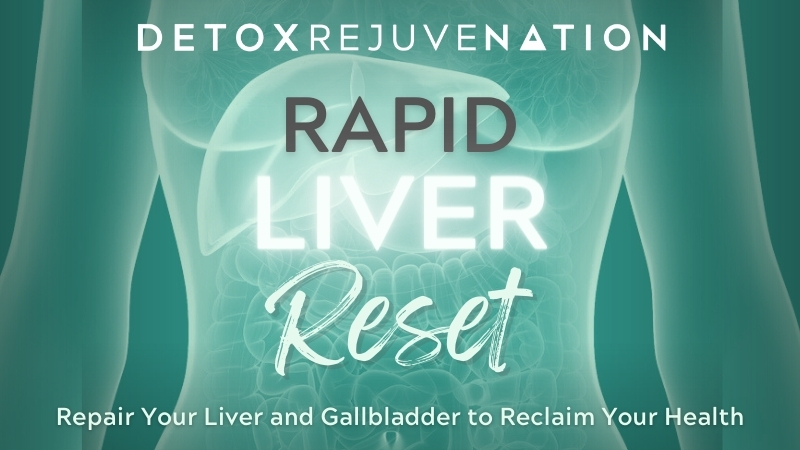Why I’m not afraid of skin cancer anymore…

Summer is in full force, which probably means you’re slathering on sunscreen every time you step outside like I used to.
But did you know most sunscreens are loaded with toxic ingredients that can alter hormone balance, drain your energy, and contribute to weight gain or other health issues?
I recently spent over a week in the Hawaiian islands soaking up the sun without worrying one bit about skin cancer or toxic sunscreen side effects, despite having been diagnosed with skin cancer when I was 25.
At the time of my skin cancer diagnosis, from the outside, I looked like your typical healthy person…
- I ate “healthy” by consuming low-calorie foods, lean meats, vegetables, fruits, yogurts, and sweets only occasionally.
- I exercised daily doing a mix of weight lifting, cardio, training for fitness shows, and marathons.
- On paper, everything looked perfect; normal cholesterol, heart rate, blood pressure, etc.
- I was even a skilled personal trainer with a Bachelor’s Degree in Fitness, Nutrition, and Health who (at the time) thought I knew all there was to know about being healthy and losing weight.
Regardless of all my “healthy habits”, before my skin cancer diagnosis, I had a growing list of health issues that I shrugged off as “normal” such as:
- Intense seasonal allergies that often lead to ear infections.
- Migraines that were increasing in frequency.
- Joint aches and muscle soreness that seemed to linger longer and longer.
- And it was getting tougher to lose or maintain my weight.
I slowly started to question the status of my health and what I had been taught all those years in college studying fitness, nutrition, and health.
Skin cancer was the light bulb moment when I knew something bigger was going on.
Being diagnosed with skin cancer at such a young age sparked an undeniable urge to get to the bottom of my health issues and to help others do the same.
I was perplexed by the diagnosis. I had zero risk factors associated with skin cancer; no family history of any cancers related to melanoma, and sure, I used a tanning bed occasionally or spent time in the sun without sunscreen from time to time, but I wasn’t an obsessive irresponsible tanner who was putting themselves at risk for skin cancer by any means.
The pieces of the puzzle just didn’t seem to add up. I was “healthy”, had minimal risk factors, and was young, yet for some reason, cancer was cultivating in my body, so I knew there had to be more to the story.
When I started searching for answers, I came across the Functional Diagnostic Nutrition® (FDN) Course; a functional lab training and health practitioner certification program that gave me the tools to dig deeper into my health issues to get to the bottom of them once and for all.
The FDN Program gave me a whole new way of looking at weight loss, health, and disease.
And as I dug deeper into my health, I found A LOT of cellular damage, hormone imbalances, liver congestion, and digestive dysfunction…
No wonder cancer had found itself at home in my body!
Running functional lab tests on yourself to look at the hormone, immune, digestion, detoxification, energy, and nervous systems all at once is a requirement of the program. These functional lab tests provide a very different lens into the body than typical blood tests. Most of these tests are done using saliva, urine, and stool to take a closer look at how the body is functioning (or not) in real-time.
Needless to say, my test results revealed a flurry of Metabolic Chaos®.
For example, my hormones were going haywire, contributing to drastic afternoon energy dips, and challenges with maintaining my ideal weight. This scenario was also a big contributor to my seasonal allergies, aches, and pains.
My liver was overloaded and unable to move cancer-causing toxins out of my body effectively. All of this coupled with high oxidative stress (i.e. cellular/DNA damage), made me the perfect candidate for cancer.
The good news is that this story has a happy ending. I’m now over 15 years skin cancer-free.
And I’m not afraid of skin cancer anymore, or any other health condition, for that matter.
You see, cancer was the first big health hurdle I had to overcome, but it sure wasn’t my last. Shortly after being deemed skin cancer-free, I ran into another series of hormone issues; cystic acne, weight gain, energy dips, Hashimotos, estrogen dominance, and yet again, a clogged detoxification system related to mold exposure.
But once more, I persevered using the FDN principles along with advanced detox strategies to now feel better in my 40s than my 20s, and I have helped many others do the same over the last 11 years as a Functional Health Practitioner.
In this week’s video and blog, I’m sharing the 5 foundational lifestyle pillars and advanced detox strategies that I’ve personally used to actually fix what was going on in my body and feel even better with age.
In every health situation, I’ve encountered personally and with thousands of clients over the past 11 years, functional lab testing always reveals the missing pieces of a person’s health puzzle that aren’t being identified with typical bloodwork.
The data and correlations gathered with functional lab tests from the hormone, immune, digestion, detoxification, energy, and nervous systems ALWAYS HAVE ONE THING IN COMMON…
LIVER AND DETOXIFICATION SYSTEM CONGESTION!
Why?
Because we have to start acknowledging the load of toxins in our environment and the toll it’s taking on the body. It’s estimated that over 150K synthetic chemicals have been introduced in the U.S. alone since WWII, and the majority of them have not been tested for long-term side effects, safety, or interactions with other elements.
We’ve been told they are “safe” in small amounts, but the reality is, every amount counts and the exposures add up quickly over time.
Women are exposed to 168 chemicals per day just from personal care products according to an EWG survey.
We can’t always see, smell, or feel toxins, but they are all around us. They hide in food, furniture, cookware, personal care and cleaning products, other housewares and building materials, and in the air all around us.
Obviously, you can’t live in a bubble to avoid toxins completely, but there are things you can do to minimize exposures and support the body’s natural detox process to eliminate them.
And a juice cleanse every once in a while isn’t going to get the job done, or scrape the surface, in this day and age.
To effectively eliminate toxins, all systems of the body need to be running efficiently; the hormone, immune, digestion, detoxification, energy, and nervous systems.
Learning to navigate toxins and support all systems of the body so I’m constantly mitigating the impacts of our modern-day environment is what gives me the confidence to spend fearless time in the sun all Summer long.
Giving your body what it needs to feel your best doesn’t have to be complicated, it can be easy. These are the 5 foundational lifestyle pillars I follow to prevent skin cancer and overcome any future health hurdles, and that I teach my clients to do too:
- Eat the right foods your body needs to function at its potential
- Get high-quality sleep according to your body’s natural rhythm
- Align daily exercise intensity to build health instead of depleting it
- Routinely release life’s daily stressors even when it feels like you don’t have any
- Incorporate simple natural detox-supporting lifestyle strategies
If you’re already CHECKING ALL of these boxes but still don’t feel like your best self, then it’s time for a deeper detox with Sinclair Kennally’s Rapid Liver Reset Program.
Sinclair is the founder of Detox Rejuvenation and someone I have personally worked with to guide me through deeper detox strategies when I was “checking all of the boxes” but wanted to feel even better.
Sinclair’s unique approach has helped me clear my body of lingering mold, metals, hidden parasites, and other toxins to achieve a higher level of health and feel better in my 40s than ever before.
The collection of wisdom and experience she has in this area is unmatched by any I’ve seen before. As someone who has personally overcome chronic illness and helped thousands of others, she has so much to offer.
Working with Sinclair has been a huge compliment to the work I do as a Functional Health Professional by helping me not only take my health to the next level but by also being a resource I can confidently refer my clients to when they need an expert guide to help them detoxify and regenerate their liver.
CLICK HERE to see how the Rapid Liver Reset Program can change your health and your life, and enroll by July 30th if you’re ready to feel like your absolute best self.
And if you need a sign to let you know if the Rapid Liver Reset program is right for you, pay attention to how your body feels leading up to and a few days after the full moon on July 21st.
If any symptoms or health issues intensify around the full moon, that’s a signature sign for parasites (hello liver flukes!), bacteria, and yeast overgrowth that can strongly correlate with a clogged detox system and toxic body burden.
I know Rapid Liver Reset will help you find the missing pieces of your health puzzle like this, so you can fix whatever is going on and get back to feeling like yourself again (or for the first time)
Here’s your Summer playlist…

Happy Summer Solstice!
I just returned from my first Summer road trip, which is my favorite time to catch up on podcasts and audiobooks!
Are you ready to embark on a Summer road trip or vacation?
Whether you’re road-tripping, flying, or staycation-ing, I bet you’ll need some good podcasts, hardbacks, or audiobooks for the season, and I’ve got some great recommendations to help you explore all of the pieces of your health puzzle so you can feel your best this Summer and beyond!
Check out some of my recent podcast interviews for your Summer Playlist to explore topics such as…
Beyond Hormone Imbalances
Dive into the intricacies of thyroid health in this insightful episode with Jenn Malecha, a Functional Diagnostic Nutrition® and Transformational Coaching expert. We start by exploring how specific tests can unlock paths to healing, moving beyond standard checks to find hidden health issues.
![]()
![]()
Bouncing Back From Betraying Your Body
Jenn shares her wisdom and insights on how to break free from negative patterns and create a healthier, more fulfilling life. She emphasizes the importance of forgiveness in our lives and how it can be a tough, yet transformative journey, and highlights the significance of self-love and how it plays a vital role in building our health and correcting imbalances in our bodies.
The BIG PICTURE of Thyroid and Weight Loss
In this podcast, Dr. Amie Hornaman interviews Jenn Malecha about her personal health journey and her thyroid and weight loss journey too. They dive into conversations and Jenn shares her knowledge with her extensive background. First, Jenn is a powerful woman. She has so much training and so much experience under her belt. This is really one that you are going to want to listen to. Her focus is on supporting health-minded individuals in taking back control of their health.
And here are a few of my favorite health-related books to help you live your best life…
- Good Energy by Casey Means, MD
- The Hormone Balance Bible by Shawn Tassone, MD, PhD
- Beyond the Pill by Dr. Jolene Brighten
- Estrogeneration by Anthony G. Jay, PhD
- The Thyroid Connection by Amy Myers, MD
- Dirty Genes by Dr. Ben Lynch
- The Autoimmune Fix by Dr. Tom O’Bryan
I need some new podcasts and books for my Summer playlist too, hit reply to let me know what some of your recent favorites have been!
Summer travel tips to feel your best!

It’s officially Summer travel season here in the Northern Hemisphere!
I’m off to Maui next week, San Francisco in July, and Santa Barbara in August. Where are you headed this Summer?
As much as I love traveling, it used to wipe me out and set my health back, but I know how to do it differently so I can feel as good, if not better, upon my return than when I left.
You probably don’t notice the full toll that traveling takes on your body because…
…if it’s work-related you tend to see it as “just part of the job” and so you continue to push through…
…and if it’s vacation-related, well, it must be all good right?
Traveling is a type of stress we just don’t typically address.
Think about it. How many times have you come home from a trip and:
- Come down with the worst cold or flu ever
- Felt extremely exhausted even if your trip was a vacation
- Had a flare-up of muscle or joint aches and pains
- Struggled to get your sleep back on track
- Noticed your weight shot up
- Or experienced a relapse in your autoimmune symptoms, anxiety, skin breakouts, or other health issues
These are all signs of the stress your body experiences while traveling.
Don’t get me wrong, I love traveling and I would never give it up. Over the years, I started to recognize the toll it took on my body too, and the proactive actions I could take to not only prevent a health setback, but feel better upon my return than when I left sometimes, and I’m about to share them with you.
First, you have to understand that STRESS is anything that places a burden on your body, resulting in inflammation and imbalances which leads to any of the health issues you might encounter.
Stressors can include the foods you’re eating that aren’t right for your body, getting inadequate sleep, over or under-exercising, emotional or physical stress, toxins that you encounter, and hidden stressors such as parasites, bacteria or yeast overgrowth in the gut, hormone imbalances, liver congestion and more.
The not-so-obvious but typical types of stressors you encounter when traveling are:
- Limited quality food and water options
- Bad beds or environments that negatively impact sleep quality
- Sitting for long periods or getting less movement in general
- Dehydration from flying or not being in your normal routine
- Crossing time zones and messing with your natural hormone balance
- And an abundance of toxins circulating the air in airports and hotels
These stressors can add up quickly while traveling.
As your stress load increases, it can suppress your immune system, making you more susceptible to getting sick, disrupting your natural hormone balance which drains your energy and mood, overloading your liver causing a backup of toxins in your body, and destroying your gut resulting in digestive upset.
You may not have complete control over these travel-time stressors BUT you can reduce their impact on your body when you take the right steps.
In this week’s video and blog, I share my top health travel tips to help you feel your best anywhere in the world, prevent health setbacks, and feel even better upon return!
You obviously can’t live in a bubble and avoid all “unhealthy” things. The goal is to…
Learn how to navigate life differently to support your health and feel your best.
As I pointed out, there are quite a few types of stressors you typically encounter while traveling; some might be within your control and some may not be, so the strategy is to minimize what you can and take action to offset what you can’t.
Instead of stressing about finding the perfect place, food, and toxin-free environments while traveling, here are some simple steps that I take, and that you can take too, in order to proactively support your body and prevent any health setbacks…
Be Food & Water Aware.
- Order and seek out gluten and dairy-free options to avoid pesticides and other inflammatory elements.
- Increase your electrolyte and water intake 1 day before plus while traveling to prevent dehydration.
- Be mindful of your alcohol intake – if tired or jet-lagged, opt for a mocktail instead.
Support Sound Sleep.
- Set your bedroom to 68 degrees for optimal sleep temperature.
- Cover all lights; alarm clocks, smoke alarms, and tightly seal curtains shut (Ninja trick! Pack electrical tape to cover smoke alarm lights and place pillows against curtains to seal the cracks).
- Get sunlight exposure upon waking up to balance your circadian (aka energy) rhythm.
Reduce Physical Stress.
- Diffuse the impacts of artificial light with stylish and compact Viva Ray blue blockers.
- Stretch, stretch, and stretch! Daily and intermittently on the plane for long flights.
- Choose less intense exercise, such as walking or yoga when you feel tired or depleted.
Decompress and Revitalize.
- Pack lavender essential oil to use anytime you need to unwind throughout your trip.
- Start and/or end your day with a cycle of deep breaths, meditation, or journaling.
- Schedule some time at the spa or book a massage to relax and restore your body.
Tone Down Toxins.
- Pack a Triad Air Go travel-size air purifier to combat allergen, mold, and chemical air exposures.
- Drink bottled spring water ONLY – Fiji, Sedona, Mountain Spring, and Evian are my top picks.
- Get in touch with nature – open windows when possible, get outside daily, and even put your bare feet in grass or dirt to offset toxin exposure.
I love helping my clients learn how to navigate life differently so they can enjoy traveling AND have their ideal health and weight at the same time.
If you’re a busy, health-minded professional who travels a ton and wants to learn how to support your body better while doing it, then follow me closely on Instagram to catch all my travel tips with my upcoming trips!
Find out if fasting is right for you…

If you follow me closely on Instagram or Facebook, then you probably know I’ve done quite a few 3-day fasts over the years.
In fact, I completed my 15th one just last week.
But let me tell you, I didn’t just jump into fasting overnight. (Ha! No pun intended.)
Yes, fasting can produce some major health benefits, and it’s been used for a long time as a therapeutic tool to help reverse or prevent health conditions such as cancer, diabetes, and other chronic diseases.
However, without the right supervision, guidance, or preparation, fasting can do more harm than good.
There was a time when my body couldn’t even handle intermittent fasting for 12 hours, let alone 3 full days.
I eased into intermittent and prolonged fasting over time, and I’m going to share the 4 simple steps I took (below) to get there so you can use fasting as an appropriate health tool as well.
BUT here’s what you need to know first…
Fasting isn’t right for everyone, regardless of how popular it is. And even if it’s right for you, it’s important to tune into your body to know if it’s the right time for you to fast or not.
I’ve seen too many clients walk through my virtual practice door frustrated with the lack of results they’ve seen from their fasting attempts, or feeling wiped out and worse off after trying it.
In the midst of healing my Hashimotos and reversing mold illness, my body couldn’t tolerate fasting at all. My body was burdened by too many toxins, depleted, and dysfunctional at the time to metabolize fat for fuel and feel good while fasting, even for short periods.
Fasting has been a part of human existence probably since the beginning of time, as our ancestors roamed the earth, alternating through times of feast or famine and hibernation during the winter months.
However, our modern-day culture has altered our fasting instincts and biology with the introduction of fast food drive-thrus, processed foods with exceptionally long shelf lives, and high carbohydrate and sugar diets that leave you craving more food than ever before.
To top it all off, the majority of our modern-day food leads to blood sugar issues, hormone imbalances, and liver and gut dysfunction, which negatively impact your ability to utilize fasting effectively as a tool until these internal issues are resolved.
And then there are the toxins and stressors that our bodies encounter every day, which alter hormonal balance and other metabolic processes, leaving the body less capable for effective fasting.
A body that was once born with a natural ability to tolerate fasting no longer can due to the evolution of the food industry and our environment.
In this week’s video and blog, I’m sharing 4 simple steps you can take to get your body into fasting shape and to make fasting more effective.
Let’s break down what fasting is first…
When it comes to intermittent fasting (especially as it relates to the Keto diet), there are basically two schools of thought:
#1- Fasting means not eating anything containing calories or nutrients for a period of time (i.e. water fasting).
#2- Fasting means not eating any sources of immediate energy, such as carbs or proteins (i.e. sometimes fats are ok)
Both approaches focus on training the body to primarily utilize fat stores for energy to become “fat-adapted.”
The standard American diet and even most other whole food or primal diets, such as Paleo and Whole30, constantly supply the body with readily available fuel sources in the forms of carbohydrates (veggies, fruits, nuts, etc.) and proteins (meat, beans, etc.)
Training the body to be fat-adapted requires limiting sources to these readily available types of fuel and forcing the body to tap into its own fuel storage – fat.
Then there are prolonged fasting periods, which typically exceed 24 hours and can go on for days. At this point, one’s body ideally should be fat-adapted in order to access its own fuel source so you can feel your best during these longer stints.
With prolonged fasting, there are also multiple schools of thought. Some do “water only” fasts, while others might include a daily cup of bone broth, like I do sometimes. Most approaches produce health benefits and you should choose one that works best for you and is in alignment with your goals.
I use prolonged fasting as a tool to restore and reset my digestive tract and flush out inflammation every few months. The cells of the intestinal lining have the ability to completely regenerate within 72 hours if you avoid consuming food, giving you a whole new, stronger, healthier digestive tract and a boosted immune system.
Having a cup of bone broth at night and taking daily supplements can help restore the body and maximize fat metabolism during this time for additional benefits, such as toxin elimination, hormonal health, energy, and sleep.
But as I cautioned earlier, fasting isn’t for everyone, especially depending on your current health status. For example, fasting could make you feel worse if you have existing hormone imbalances or a high toxic body burden from mold or other environmental factors.
It’s always important to consult with your health professional before trying any method of fasting.
And before you jump right in, follow these 4 simple steps to get your body into fasting shape and to make fasting more effective…
1 – Test, Don’t Guess.
It’s better to know about underlying hormone or nutrient imbalances before you dive into fasting. At a minimum, check your thyroid, cortisol, estrogen, testosterone, and melatonin levels, along with your vitamin and mineral balance, before starting a fasting routine. If any imbalances exist, lay the foundation to reverse them with a therapeutic diet, adequate sleep, appropriate exercise, stress reduction, and nourishing supplements before jumping into fasting.
2 – Fuel Up with Fat.
Slowly ease your body into the transition by progressively reducing your carbohydrate intake and fasting with fat as your primary fuel source. Fat is not readily available as fuel when ingested, so it still requires your body to tap into its own fat fuel sources. Allow yourself to have a fat-only meal in the morning, such as coffee or matcha tea with ghee and/or full-fat coconut milk. This will deliver some of the essential nutrients your body needs so it can still function at its potential while staying away from carbs or proteins that can hijack fat for fuel metabolism.
Training your body to use fat for fuel is the key to having energy and sleeping well while fasting.
3 – Ease Into It.
Don’t go for the gold right from the get-go. Start by making dinner your last meal, fasting overnight, and gradually extending the time you eat breakfast in the morning a few days a week. This is basically what’s called Intermittent Fasting.
I started by having dinner by 7:30pm and my first meal around 9:30 or 10am the next morning, resulting in a 14-hour fasting period. As your body adapts, your energy will improve, letting you know when you can extend the length of your fasting window.
(NOTE: Women’s hormones are particularly sensitive to food deprivation, so it’s best to fast every other day instead of every day when getting started, and to honor your body’s needs around certain times of your cycle.)
4 – Salt and Supplement.
When avoiding food, you’re also avoiding access to nutrients, so it might be essential to supplement what you’re missing. When fasting, supplementing with vitamins and minerals will help maintain sleep quality, keep your hormones happy and your energy balanced, and support the process of fat metabolism. Our ancestors salted meats to preserve them for food storage and ate every part of the animal (organs, cartilage, etc.) so the nutrient values in their bodies were much higher than ours, even when they were forced to fast.
While fasting, I continue to take my daily supplements to ensure my body has the nutrients it needs to get the job done.
Certain herbal teas, such as Pique Tea, also help support the body while fasting. During prolonged fasting periods, I’ll have 1-2 cups of black or green tea in the morning and one cup of green tea in the afternoon.
Plus, I add an extra packet of LMNT electrolytes to maintain hydration, balance cortisol, and boost energy.
I also take specific binders to help capture toxins being released from fat (where they are stored) as it’s broken down for fuel to make sure they are eliminated and not recirculated.
You’ll know your body is ready for fasting when your energy is even all day long and your sleep is spectacular, especially when you start to lengthen time between meals.
We want to think of the body as a well-oiled machine that is ready to adapt to anything we throw at it, but that’s generally not the case, considering all the variables that impact our health in this modern-day world.
With most diet trends, people have a tendency to dive all-in without considering if their body is ready for it, and when it “doesn’t work,” they give up.
Often, it’s not the diet that didn’t work, but something else under the hood that got in the way. This is why it’s always better to test, not guess, in order to figure out exactly what is right for your body, so you don’t go spinning your wheels, wasting money or time on failed attempts or health improvement strategies that aren’t right for you.
If you want to find the missing pieces of your health puzzle so you can effectively use fasting as a tool and feel your best, then…
I have TWO CLIENT OPENINGS for the month of June!
CLICK HERE TO BOOK an Ideal Health & Weight Discovery Call with me.
During this 45-minute Discovery Call, we’ll explore what’s currently going on with your health, your goals and how we can work together with the right lab tests and resources so you can feel like your best self.
Is it seasonal allergies or something else? What you need to know.
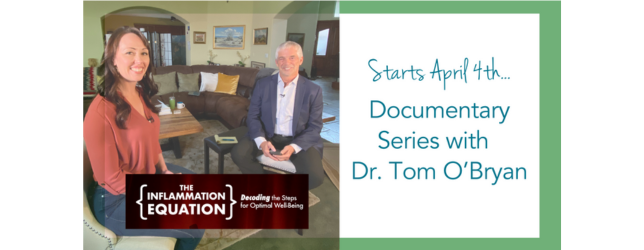
I’m loving the recent change of season! But I didn’t always feel this way…
Seasonal shifts used to hit me hard because of the impacts they had on my health. Every Spring and Fall, I used to struggle with allergy symptoms such as:
- Brain fog
- Low energy
- Congestion
- Earaches or infections
- Coughing and sneezing
- And downright, just feeling blah!
When I moved from a Northern California farming town full of pollen to sunny San Diego with refreshing ocean breezes for college in 2001, it seemed odd to develop seasonal allergies but I brushed it off, completely ignoring the smoke signal symptoms my body was sending that eventually led to a skin cancer diagnosis at the young age of 25.
Back then, I couldn’t think straight during seasonal changes due to allergy-induced headaches, sinus congestion that led to earaches, and super low energy, despite how much coffee I drank.
Now, seasonal shifts don’t phase me at all.
Seasonal allergies might be common, but they are not normal.
The frequency and intensity of seasonal allergies are clues about the immune system’s strength and your body’s inflammatory load; the more frequent and intense allergies are, the more inflammatory load you have and the lower your immune system.
The stronger your immune system is and the lower the inflammatory load, the more adaptable your body is and thus less reactive to things like pollens and allergens in the air.
Being diagnosed with skin cancer at such a young age motivated me to think about health differently and go searching for answers because, despite these health issues, my doctor always said my bloodwork looked normal and I was the “picture of perfect health” even though I didn’t feel that way.
And what I discovered was…
Inflammation is at the root of every symptom, condition, and disease.
Over time, I have implemented strategies to reduce the overall inflammatory load on my body and strengthen my immune system to get rid of seasonal allergies completely and never have a recurrence of skin cancer again (currently 15 years skin cancer-free!).
If you suffer from seasonal allergies or other health issues, there’s no need to suffer anymore. You can reduce and even prevent them, like I have.
My friend and colleague, Dr. Tom O’Bryan, has traveled the globe, creating a brand new documentary series called “The Inflammation Equation” that explores ways to support your body’s natural healing process by lowering the #1 roadblock to healing: inflammation.
I’m honored to have been interviewed by Dr. Tom as part of the series to share my health journey and expertise to help others like you achieve your ideal health and weight, and defy everything we’ve been told about aging and health issues like I have.
Watch the Inflammation Equation!
This informative documentary series explores practical strategies to:
- Identify (and overcome) potential underlying causes of inflammation.
- Discover effective methods to support your body’s natural healing processes.
- Learn from leading global experts in the field of health and wellness.
The series features insights from renowned figures like Jeffrey Bland, PhD, Bruce Lipton, PhD, me, and even Fran Drescher, plus over 50 other paradigm-shifting leaders.
The series starts April 4th, so mark your calendar and GRAB YOUR ACCESS PASS.
These are some of the most common signature signs of chronic inflammation, especially if you have two or more:
- Allergies or asthma (especially if it progressively gets worse)
- Constant body aches and pains (muscle and joint)
- High blood pressure or cholesterol
- Restless sleep, fatigue and/or lethargy
- Any autoimmune disorder (Hashimoto’s, Colitis, Celiac, Crohn’s, etc.)
- Get sick with a cold, flu or virus multiple times a year
- Bouts of anxiety and/or depression
- Constipation and/or diarrhea
- Skin rashes, acne and breakouts
And the list could go on for a long time.
As you’ll see discussed in The Inflammation Equation documentary series, to reduce inflammation, strengthen the immune system, and boost the body’s ability to handle seasonal changes and reverse or prevent health issues, there are some strategic daily strategies you can implement, such as:
- Eating an anti-inflammatory diet
- Being asleep by 10 pm and sleeping through the night
- Moving your body daily and decreasing exercise intensity on days you feel tired
- Drinking at least half of your body weight in ounces of water to flush toxins
- Taking time to destress and disconnect daily, even if it’s for 5 minutes at a time
- Gradually eliminating toxins from your environment
Along my health journey, I have incorporated all of these strategies into my daily way of being to prevent seasonal allergies, and other health issues and create long-lasting results.
I hope you’ll watch The Inflammation Equation with me next week to understand what your personal inflammatory triggers are and the steps you can take to reduce them so you can unlock answers about your health, reduce your risk for disease, and prolong your life.
Sign up to watch The Inflammation Equation series so you can take back control of your health and create a movement by sharing it with everyone you know!
The Root Of All Disease…
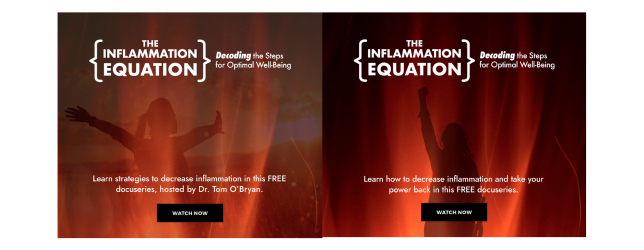
Did you know there’s ONE thing that all diseases, health issues, and conditions such as weight gain, thyroid imbalances, low energy, autoimmunity, high cholesterol, cancer, Alzheimer’s, brain fog, and more have in common?
INFLAMMATION.
Inflammation slowly accumulates over time and silently brings people to their wit’s end about their health, and it can even end a person’s life.
As Dr. Mercola once said…
“The presence of inflammation is what makes most diseases perceptible to an individual. It can and often does occur for years before it exists at levels sufficient to be apparent or clinically significant. How long it has been smoldering really determines the degree of severity of a disease and often the prognosis, assuming the inflammation can be controlled. One could also argue that without inflammation, the most disease would not even exist.”
Inflammation is not something widely talked about in your typical doctor’s office unless it relates to a fractured bone, bruise, concussion, or other physical injuries. Yet inflammation is the body’s number one response to just about any imbalance going on in the body.
Inflammation cannot always be seen, felt, or heard, so it often goes undetected and overlooked.
There are two kinds of inflammation:
- Acute – a brief response to injury or illness lasting only a few days
- Chronic- when it stops being acute and remains as a low-level constant response to ongoing stress on the body
Acute inflammation is a healthy response that allows your body to repair and heal, but when it becomes chronic, it becomes problematic.
Chronic inflammation is when your body is consistently bombarded by various causes of inflammation and eventually loses its ability to regulate the inflammatory response. This overly active inflammatory response can damage cells and tissues, resulting in conditions such as leaky gut, autoimmunity, heart disease, arthritis, Alzheimer’s, and much more.
It can also have a big impact on hormone balance because cortisol (also known as your stress hormone) is your body’s natural anti-inflammatory agent. When inflammation is high and chronic, this disrupts the natural cortisol balance, triggering a downstream dysregulation of other hormones such as thyroid, estrogen, progesterone, and testosterone, which disrupt your sleep, cause weight gain, and drain your energy.
How do you know if chronic inflammation is affecting you?
My friend and colleague, Dr. Tom O’Bryan, has traveled the globe, creating a brand new documentary series called “The Inflammation Equation” that explores ways to support your body’s natural healing process by lowering the #1 roadblock to healing: inflammation.
This informative documentary series explores practical strategies to:
- Identify (and overcome) potential underlying causes of inflammation.
- Discover effective methods to support your body’s natural healing processes.
- Learn from leading global experts in the field of health and wellness.
The series features insights from renowned figures like Jeffrey Bland, PhD, Bruce Lipton, PhD, me and even Fran Drescher, plus over 50 other paradigm-shifting leaders.
The series starts April 4th, so mark your calendar and GRAB YOUR ACCESS PASS.
These are some of the most common signature signs of chronic inflammation, especially if you have two or more:
- Allergies or asthma (especially if it progressively gets worse)
- Constant body aches and pains (muscle and joint)
- High blood pressure or cholesterol
- Restless sleep, fatigue and/or lethargy
- Any autoimmune disorder (Hashimoto’s, Colitis, Celiac, Crohn’s, etc.)
- Get sick with a cold, flu or virus multiple times a year
- Bouts of anxiety and/or depression
- Constipation and/or diarrhea
- Skin rashes, acne and breakouts
And the list could go on for a long time.
All of us have some inflammation from time to time. You might even be able to pinpoint times when it is worse after eating certain foods or during a full moon when water in the body is being moved by the gravitational pull of the moon.
But as Dr. Mercola said, “It (inflammation) can and often does occur for years before it exists at levels sufficient to be apparent or clinically significant.”
The accumulation of inflammatory triggers over time burdens the body, eventually resulting in chronic inflammation. This is why we feel it more as we get older, not just because we are getting older, but because more time has passed for inflammation to accumulate.
How can you reverse the effects of chronic inflammation?
Reducing inflammation for each person can be different depending on what their top triggers are, but in general (for everyone), these are the most important things you can do to reduce your daily inflammatory load:
- Avoid inflammatory foods such as gluten, dairy, soy, added sugar and alcohol
- Eat organic fruits and veggies free of herbicides and pesticides
- Minimize environmental toxins in drinking water, air, personal care, and cleaning products
- Have an outlet for mental/emotional stress, such as meditation, yoga, or deep breathing
Understanding what triggers inflammation for you and taking steps to reduce it is one of the ways you can unlock answers about your health, reduce your risk for disease, and prolong your life.
You might be wondering why don’t we have a cure for everything if we know that inflammation is the root of all diseases.
Well, we actually do, you just have to take matters into your own hands, and I’m excited to be a part of a health revolution to help you be your own Health Boss.
It’s an honor and a privilege to share parts of my health journey and expertise in The Inflammation Equation documentary series to help others like you achieve your ideal health and weight, and defy everything we’ve been told about aging like I have.
Sign up to watch The Inflammation Equation series so you can take back control of your health, and create a movement by sharing it with everyone you know!
Why calorie counting doesn’t work…

How many calories have you counted in an attempt to lose weight, improve your health, and get back to feeling like yourself again?
Probably too many to count, and I bet you didn’t get the results you wished for, or if you did, they were short-lived.
I was an obsessive calorie counter for the longest time. I used to log every bite I took, and I even religiously wore an Apex Bodybugg (a calorie-burning tracking device) for years.
However, I still struggled to lose and maintain weight despite my dedicated calorie-counting efforts.
For the longest time, we’ve been told that counting calories is the formula for better health and weight loss – it’s all about eating less and moving more right?
Not exactly. This is a massive over-simplification of what it actually takes to feel great and lose weight.
I’ve seen this calories-in-versus-calories-out equation fall short for many others as well. This broken approach is a big reason why I became a Functional Health Practitioner – because as a personal trainer back in the day, my clients weren’t getting results even though they were exercising and watching what they ate. They too continued to struggle with not only their weight but also other health issues, despite their dedication to move more and eat less, just like I did.
This consistent pattern inspired me to question the status quo and search for the missing pieces of the ideal weight and health puzzle.
And sure enough, as I dug into how the body works, the data clearly showed why calorie counting falls short for so many people, and certainly doesn’t support long-term sustainable results.
So if you’re counting calories, here are 4 primary reasons why you should stop…
Reason #1: Calorie Calculations Aren’t Accurate.
A study by the Beltsville Human Nutrition Research Center found that “our bodies sometimes extract fewer calories than the number listed on the label. Participants in their studies absorbed around a third fewer calories from almonds than the modified Atwater values suggest. For walnuts, the difference was 21 percent.” (Read more on the study here.)
Aside from the body extracting fewer calories than what you think you’re consuming, food manufacturers are also allowed to underreport calorie values by as much as 20% to pass inspection by the FDA.
So there’s no way to know exactly how many calories you consume.
Reason #2: One Fat Pound Doesn’t Equal 3,500 Calories.
It’s been said that in order to lose a pound per week, you need to have a weekly caloric deficit of 3,500 calories, and supposedly 3,500 calories equals one pound of fat.
Researcher Zoe Harcombe eloquently debunks this myth in her research, where she shows that one pound of fat actually does not equal 3,500 calories, but that it can range from 2,843 to 3,752 calories. (See Zoe’s full breakdown here.)
This, paired with reason #1, makes this calorie equation even messier and inaccurate. It’s impossible to calculate your exact caloric deficit due to these variances, too big of a deficit can quickly slow down your metabolism (ability to lose weight) and nutrient deficiencies, which will stall results.
Reason #3: First Law of Thermodynamics Myth.
The weight loss formula of calories-in versus calories-out is said to be based on the first law of thermodynamics: energy is neither destroyed nor created, it’s simply transformed. The energy of a calorie is said to be transformed with exercise and burned off in the form of heat.
Here’s the flaw: this law only applies to closed systems where there are no outlets. As Sean Croxton pointed out years ago, “The human body seems pretty damn open to me. It pees, poops, and sweats into the environment.”
The body definitely is not a closed system, so how can it abide by the first law of thermodynamics? It’s ingesting, converting, and excreting energy all of the time!
Reason #4: All Calories Are NOT Created Equal.
When counting calories, you naturally try to conserve what you’ll spend your calories on. This often leads to a food scarcity mindset, triggering you to choose foods that are less nutrient-dense and less satiating (such as 100-calorie pack snacks) in order to feel like you get to eat more and more frequently.
Fats contain 9 calories per gram, while protein and carbs contain 4 calories per gram.
At first glance, it appears as though carbs and proteins would be the ideal choice when counting calories. However, animal fats contain some of the most essential fat-soluble nutrients, such as Vitamin D, K, and Omegas while animal proteins contain the most complete combinations of amino acids necessary for cellular function and muscle maintenance or growth.
To get the same nutrient values from carbohydrates, you would need to eat twice as much, plus higher-carb diets spike blood sugar levels throughout the day, resulting in more cravings and leading to insulin resistance, which then causes weight gain.
Alternatively, eating more fat and protein can balance blood sugar, cut cravings, and they are both better sources of fuel for the brain and body.
Aside from all of this, calorie restriction can even cause weight gain in some cases, especially if you have a thyroid or other underlying hormone imbalance.
In this week’s video and blog, I’ll explain exactly why calorie counting doesn’t work and the new approach to diet you need to achieve your ideal body and health.
Once I stopped counting and calculating, I finally started getting real results. Losing and maintaining my weight was no longer a struggle; it came naturally.
Instead of counting calories, I started eating foods that were right for my body so it could function at its potential and be the natural fat-burning machine it was meant to be. This same approach has proven to be successful for all of my clients too.
When you’re eating the foods that are right for your body so it can function at its potential, you will:
- Have an abundance of energy that lasts all day
- Sleep more soundly and wake up feeling rested
- Feel satisfied between meals and no longer need to snack
- Support hormone balance, detoxification, and other bodily functions
All of which support the body’s ability to easily lose or maintain weight, and for you to feel great!
So you might be wondering, how do I know what foods are right for my body?
The first step to finding what foods are right for your body is paying attention to how food makes you feel and knowing there is a difference between eating healthy and eating right for your body.
Eating right for your body will incorporate healthy foods, but not every “healthy” food is right for your body.
Next, aim to eat foods that make you feel all-around good; the foods that keep you feeling full for extended periods, that give you energy, and that DON’T leave you feeling bloated, anxious, or tired. These foods tend to be whole, organic vegetables, animal proteins, and fats that don’t come in a bag, box, can, or 100-calorie pack.
And always eat with intention.
Before you take a bite, grab something on the go, or sit down to prepare a meal, consider how you want to feel and if the food you’re about to eat is in alignment with that feeling.
You’ll probably find that most of your calorie-counting type foods don’t meet these requirements because they result in energy crashes, cravings, bloating, anxiety, or a variety of other ailments.
These simple steps will help you find foods that balance your blood sugar and boost your metabolism to support weight loss or maintenance.
Click here to get my Food & Body Language Log for FREE to easily figure out what foods are right for your body so you can feel your best, without counting a single calorie.
As a recovered calorie counter, I can tell you this more natural and mindful approach to eating is much more sustainable. It produces the long-lasting results you desire, so you’ll never have to get back on that calorie-counting rollercoaster ride ever again!
Is the full moon messing with your health?

Are you currently experiencing more…
Anxiety
Bloating
Low energy
Constipation
Restless sleep
Or an increase in any other symptoms?
You can call me crazy, but just hang in here with me for a minute…
Have you ever noticed with yourself or others, that there seems to be something cyclical when it comes to being moody and irritable (and I’m not talking about PMS)?
A fluctuation in mood that only lasts for a few days for some reason and is unexplainable?
Or what about sleep disturbances – going through periods when you have trouble falling asleep or tossing and turning that only last for a few days or a week at a time?
How about your digestion? Do you experience phases of really great bowel movements, and then all of a sudden they seem to go sideways?
And then there’s stuff such as skin rashes or breakouts, teeth grinding, weight gain, joint aches and pains. Do those come and go every few weeks, too?
Have any of these symptoms or other ailments been more intense the last few days leading up to this weekend’s full moon?
It’s not a coincidence, it’s science.
I see this cyclical pattern in many of my clients’ symptoms and have experienced it myself too.
Considering that the body is 80% water, scientists and astrologers have often thought that similar effects happen in the body, creating almost a “human tidal pull” that can affect brain function.
This gravitational pull can also stir up parasites, bacteria, and yeast during a full moon.
This increase in activity creates internal stress and inflammation that impacts your energy levels, ability to sleep, digestion, hormone balance, and so much more!
Classic symptoms of parasites, bacteria, and yeast overgrowth in the body can include (but are definitely not limited to):
For example, it is estimated that 50% of the world’s population has an overgrowth of H. Pylori bacteria, yet 80% don’t display any of the typical symptoms so it’s dismissed or overlooked.
Some studies show that more than 50% of healthy women and men host colonies of Candida Albicans yeast, with 60% of those who suffer from it being women, 20% being men, and 20% being boys and girls, yet it’s not being addressed.
The most common parasites, bacteria, and yeast I see in my practice are Blastocystis Hominis, H. Pylori, and Candida.
If you notice a pattern, then it’s highly likely you’ve got a parasite, bacteria, or yeast problem (and possibly all 3!), regardless of what your doctor or other health professional might tell you because your body doesn’t lie.
So what makes someone a good host?
A combination of lifestyle choices and environmental factors co-create the perfect situation for these pathogens to thrive in, which is actually good news because that means you can make changes to restore balance to your body and internal ecosystem.
Aside from changing up your diet, as a functional health practitioner for over 10 years, the NUMBER ONE thing that changes people’s internal ecosystem to get parasites, bacteria, and yeast under control is SUPPORTING YOUR LIVER & DETOX SYSTEM!
The liver is a hard-working organ. It’s responsible for processing and filtering toxins out of the blood, producing bile to help with fat digestion, storing energy in the form of glycogen, and so much more that make you a good host or not.
And now more than ever, in a modern-day world that has exposed us to more toxins than ever in human history, your liver needs help.
Knowing how the full moon might be affecting your health and the help your liver needs so that you can feel like your best self is exactly why you should check out Sinclair Kennally’s Rapid Liver Reset program (use code ENCORE for my special community discount).
The liver and detox supporting strategies Sinclair teaches in Rapid Liver Reset are the same exact steps I have taken to take my personal health to the next level.
If you are ready to…
Rapid Liver Reset enrollment closes March 2nd, click here to jump in using code ENCORE for my special community discount!
And remember to track any symptom correlations with the full moon as a way to measure the results you’ll get from this program!
Your personal liver health plan of action to fight toxicity…
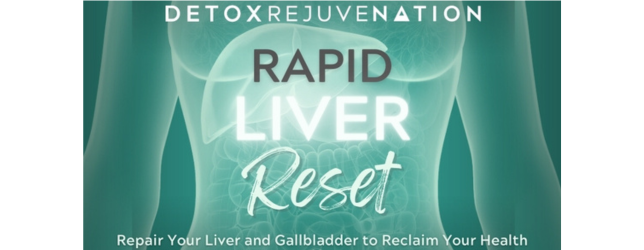
Do you wake up exhausted in the morning, despite getting 8 hours of sleep (and want to crawl back under your blanket the second you open your eyes?)
Are you tired of battling bloating, constipation, or diarrhea (or both!), and cramping?
Do you have so many food sensitivities that your “safe” foods can be counted on two hands?
If you have constant digestive issues, fatigue, inflammation, challenges with weight and hormones, or brain fog, your liver may need some support.
We are bombarded with more environmental toxins and industrial chemicals daily than ever before.
Since the 1940s, over ONE HUNDRED THOUSAND toxic chemicals have been released into our environment. Could you imagine taking on 100,000 new tasks without any extra pay or hours in the day? That’s basically what we have asked our livers to do.
The reality is, unless you take action, your liver and detox system just can’t keep up.
Your liver is the powerhouse for not only detoxification but also digestion, conversion of thyroid hormone, excretion of excess estrogen, blood sugar balance, and so much more!
For example, 20% of thyroid hormone T4 relies on the liver to be converted to T3, so there is certainly a huge healing opportunity here if you are already suffering from a thyroid imbalance, or even if you’re trying to prevent one.
To help your liver function optimally these days, you need targeted lifestyle and supplement strategies.
This is especially important for the liver and gallbladder because toxins can actually get trapped in the bile, become encased in cholesterol (causing high cholesterol levels!), and form gallstones leading eventually to gallbladder removal!
Did you know that 80% of women over the age of 40 have toxic, sluggish bile?
25% of Americans have a non-alcoholic fatty liver.
In the United States alone, 750,000 gallbladders are removed per year.
Even conventional medicine acknowledges the frequency and severity of gallstones: 21% of adults will experience them in their lifetime (and that’s an older statistic… in reality, it’s much higher!)
The good news is… there are ways to address this and take charge of your health.
And this is exactly what my dear friend and colleague Sinclair Kennally recently covered in her recent Masterclass.
Click here to catch her Liver Detox Masterclass Encore On February 20th!
Sinclair is the co-founder of Detox Rejuvenation, and someone I have personally worked with to guide me through deeper detox strategies to help me get rid of mold, metals, hidden parasites, and other toxins to obtain even better health.
The collection of wisdom and experience she has in this area is unmatched by any I’ve seen before. As someone who has personally overcome chronic illness and helped thousands of others, she has so much to offer.
Working with Sinclair has been a huge compliment to the work I do as a Functional Health Professional by helping me not only take my own health to the next level so I can serve my clients better but also by expanding the lens I look through, and the modalities used to help others heal on a deeper level.
Shortly after starting her liver support and detox protocols, I no longer experienced cyclical breast tenderness, was able to shed stubborn weight, and feel the benefits of clearing out toxins from old mold exposures.
In the Masterclass Encore, you’ll hear Sinclair explain:
- Why typical detox approaches are outdated and what to do instead
- What’s really going on in the world impacting your detox pathways and your health
- How you can take guided, targeted action with their Rapid Liver Reset program
I can’t stress enough how important taking care of your liver is given the impacts of our modern-day world.
This masterclass is for anyone, from the sensitive folks recovering from chronic illness to the powerhouses who want to optimize their health.
Click here to catch her Liver Detox Masterclass Encore February 20th and please share this with your friends and family to help them support their liver and best health too!
Have you lost this? You might find it here…

This happens to a lot of people, but hardly anyone wants to talk about it.
The majority of my clients suffer from it and in the beginning, they are embarrassed to admit it.
Most of us chalk it up to old age, being “past our prime” or because “I don’t have time.”
What is this ailing issue that is so prevalent?
LOW LIBIDO.
Yep, I said it. Did you cringe when you read it? Do you secretly feel as though you’ve lost your mojo and wonder what happened or where it went?
Well, I can tell you it’s not because you’re “past your prime” or because you’re getting older. All of my clients who once “lost their libido” were able to find it again.
If you’ve lost your lust, then stress is the number one suspect.
Think of the stress hormone cortisol as the main controller for the rest of the hormone system.
Whenever we encounter stress, it triggers the sympathetic nervous system and the release of cortisol. This reaction is often referred to as the “fight or flight” response that our body developed to survive real-life threats or dangerous situations.
When cortisol spikes from stress, it sends all of the body’s resources outwards for quick moving and thinking to escape the threat while suppressing other functions such as digestion or the production of other hormones such as testosterone, estrogen, and oxytocin.
Which makes sense, right? If you had to escape a dangerous situation, your body needs to focus on quick moving and thinking, and not on getting busy to reproduce.
This brilliant body response was designed to help us overcome acute (short-term) stress-inducing situations like surviving an encounter with a predator.
However, in our modern-day world, we encounter big or subtle stress triggers all day long, and this prolonged stress response can have long-term impacts on the hormone system leading to sex hormone depletion and a loss of libido.
All of this means stress has an immediate and long-term impact on your libido.
The good news is, with some simple healthy habits and nourishing foods, you can boost your libido right back to where it should be.
In this week’s video and blog, I’m sharing 5 easy ways to reduce the impacts of stress daily and get your libido back.
With Valentine’s Day just around the corner, February is the perfect month to focus on finding your sex drive again so you can live your best life, full of passion and love!
Here are 5 quick and easy ways to stoke your fire naturally and get your libido back:
#1 – Just Breathe.
Inhale for 5 seconds, hold for 5, and exhale for 7, repeat 5-10 times once a day or more for better results. Adopting the breathing pattern of a relaxed person immediately flips the switch in your body from fight or flight to a calm state, bringing cortisol levels down, and letting the rest of the hormones kick back into gear.
#2 – Daily Hug Dose.
Hugging and physical touch release oxytocin, the “love hormone”, which helps to lower cortisol levels. This hormone also facilitates the feelings of connection, bonding, trust and love which are all essential for feeling “in the mood.” Hug yourself or a partner first thing in the morning and/or throughout the day to build upon the benefits of oxytocin.
#3 – Maca Motivation.
Maca is a root-based supplement that has traditionally been used as an aphrodisiac for over 2,000 years. It stimulates the hypothalamus, pituitary, and adrenal glands, which all support sex hormone production and therefore sex drive! It has been known to calm the mind and support mental clarity, which can assist in reducing stress and also bring your libido back into focus.
#4 – Rest & Replenish.
Cortisol has a natural rhythm throughout the day guided by the sun cycle. When the sun rises, cortisol naturally increases without triggering the stress response to give you the energy to get up and get going in the morning, and then when the sun sets, it signals the body to lower cortisol in preparation for bed.
Being asleep by 10 pm sets your body up for success with optimal rest and replenishment to balance sex hormones and perform other critical functions. This also keeps your cortisol rhythm in sync. When it’s out of whack, you won’t have the energy or desire to hit sack with anyone.
#5 – Power Up with Protein.
The nutrients and amino acids found in proteins such as oysters, salmon, eggs, and beef have been shown to boost testosterone, the main libido hormone. Eating adequate amounts of protein can also give you longer-lasting energy and prevent bloating to fuel your desire and self-esteem to get frisky.
Ultimately, if your libido is being suppressed by stress, it’s best to look at minimizing your overall stress load for long-lasting results.
In the work I do with clients, one of the first things I ask them to do is redefine the word “stress”.
“Stress is anything that places a burden on the body, resulting in inflammation or imbalance.”
Typically, when we hear the word “stress”, we think of mental or emotional stress and common things such as challenges within our relationships or family, tough-to-deal-with bosses, crappy coworkers, traffic, the loss of a loved one or friend, trying to meet expectations and deadlines.
But stress can also be:
- Foods you’re eating that aren’t right for your body or that cause inflammation
- Going to bed late or getting a bad night’s sleep (especially consistently)
- Over-exercising or intense exercise when the body is already stressed
- Not exercising or moving your body enough regularly
- Toxins that you can’t always see, hear or feel in your environment
- Nutrient deficiencies that you might be unaware of
- Tight muscles or joints that are out of alignment (specifically the spin)
- Traveling and crossing different time zones
When you tune into your body, you’ll start to recognize the different variables adding to your body’s overall stress burden, and then you can take strategic action to give your body what it needs to feel your best and have a lively libido.
Now I want to know…
Which of these 5 tips are you going to put into action to boost your libido leading up to Valentine’s Day?
Comment below to let me know what you’re committing to!

